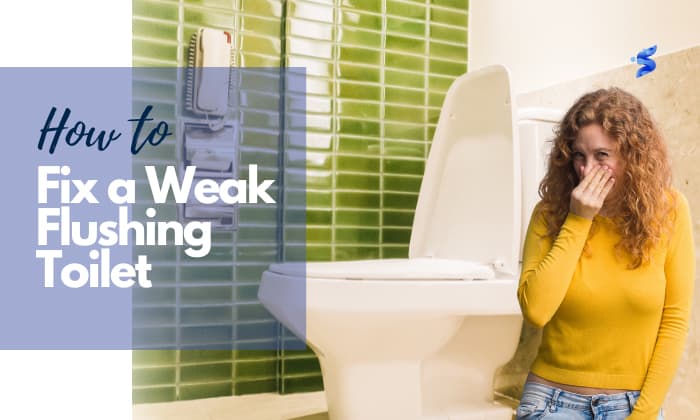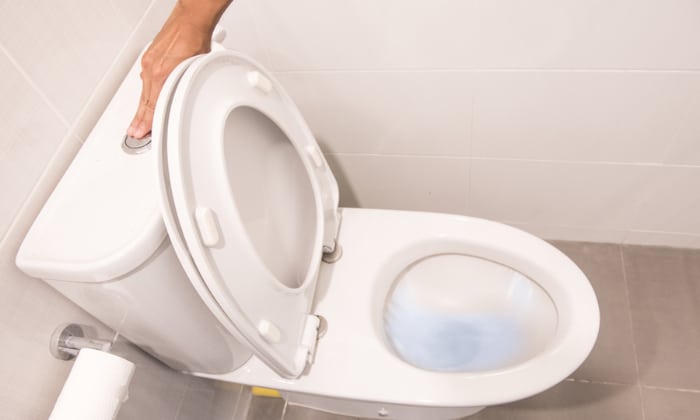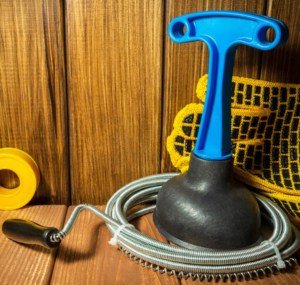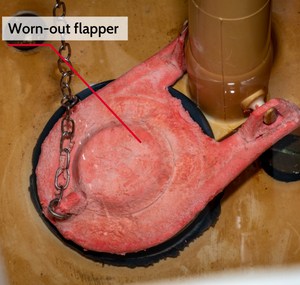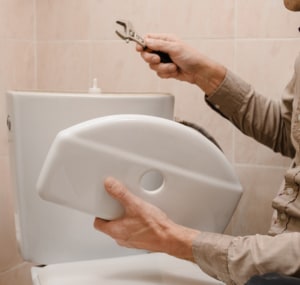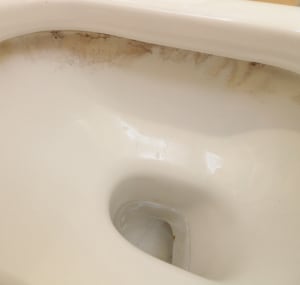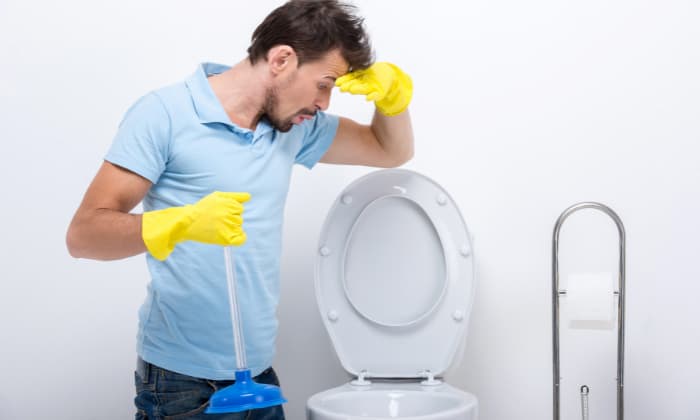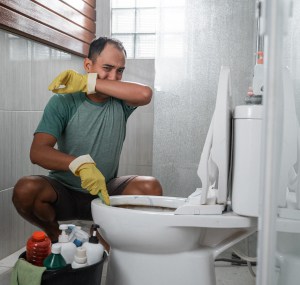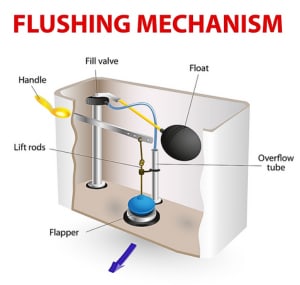It would be embarrassing to find out the toilet you recently dumped into has a weak and slow flush. Similarly, it would be disrespectful to offer a faulty flushing toilet to a guest at your home.
Having a weak flushing toilet is a nightmare for you and anyone you invite over. Unless you want to deal with repetitive flushing or plunging other people’s wastes, you’ll need to improve toilet flush strength.
If you’re requesting: “help my toilet flush better,” you’ve come to the right place. This guide will teach you how to fix a weak flushing toilet and the common causes you should watch.
Table of Contents
Ways to Fix a Weak Flushing Toilet
Method 1. Unclog the toilet trap
What to prepare:
- Toilet Plunger
- Toilet auger or plumber’s snake
Even with enough water poured down into the bowl, toilet clogs make complete flushing difficult. In these instances, it is common to see that the toilet flushes but poop stays – or any waste for that matter.
With this, it is important to dislodge the blockage first. Start by using the trusty plunger to force out any possible obstruction present.
If no changes happen, you may also try using toilet augers or plumber’s snakes to break down or pick up harder-to-reach debris.
Method 2. Replace the flapper
What to prepare:
- New toilet flapper
- Cloth or toilet paper
- Pliers (optional)
A worn-out flapper means water is not sealed properly inside the tank. And this continuous leaking can possibly be the reason why your toilet is not flushing strong enough.
- To replace a faulty flapper, shut off your toilet’s water supply first since we’ll need the tank to be empty as much as possible.
- Proceed to open the tank’s lid and flush out most of the stored water.
- Disconnect the flapper’s chain from the flush lever to be able to remove the flapper completely. You may use pliers to cut off the flapper if it has already stiffened and is difficult to remove by hand.
- Before installing the replacement flapper, wipe off some of the water from the seal using a cloth or tissue paper.
- After which, you may now install the new flapper and turn on your water supply again. This should get the toilet to flush better.
Since you now have a proper water-tight seal, with the chain-lift mechanism working properly, it is expected that the tank can hold and release the right amounts of water; and will consequently increase toilet flush pressure.
Method 3. Adjust the float
What to prepare:
- Screwdriver
It is possible that your toilet tank is not getting filled with appropriate amounts of water for a complete flush because the float is set too low.
To fix this, look for a screw on the other end of the float and above your toilet tank’s fill valve and – this is the adjustment screw of your float.
Loosen it up to raise the float’s level. This lets more water enter and get stored in the tank, which will make the toilet flush stronger.
Method 4. Unclog the rim/siphon jets
What to prepare:
- Toilet brush or used toothbrush
- Toilet cleaner or vinegar
Mineral deposits, rust, and other kinds of debris can build up in your toilet’s rim jets, also called siphon jets – the small opening where water from the tank comes out. These solids obstruct water flow and pressure; making your flush slow and weak.
Clean the toilet rim’s underside thoroughly to unclog the jets.
- Start by cutting off your toilet’s water supply.
- You can then pour some commercial toilet cleaner or white vinegar into the bowl to help break the solids building up.
- Scrub the small holes underside of the toilet’s rim vigorously using a normal toilet brush or a used toothbrush.
- Flush the toilet and see if it was able to improve toilet flush performance.
- Repeat the process if needed.
What Are the Causes of a Weak Flushing Toilet?
1. Clogged toilet
Commonly, debris like toilet paper, sanitary products, and accumulated hair get stuck in the toilet’s curved pipe called a ‘trap.’ The presence of such blockage significantly affects the toilet’s capacity to flush and drain wastes down the sewer.
Regardless of how much water you’ve poured into the bowl, this obstruction disrupts the normal flushing power of your toilet – resulting in toilet wastes being drained only partially, or even not at all.
2. Low water level in the tank
If it seems toilet flushing is slow but not clogged, then the problem may be not enough water is stored and consequently released from your toilet tank – hence the power of the flush is significantly reduced.
Constant occurrence of low water levels in the tank may be caused by problems in either of these two toilet tank parts:
- Flapper
The flapper is the rubber seal that keeps the water in the tank. As you flush the toilet, the flapper is raised, and the stored water exits from the tank and into the bowl.
Eventually, the flapper becomes worn out or displaced each time you flush. This makes the ‘seal’ weaker and causes water to leak out of the tank. And less water stored means the toilet flushes slowly and incompletely.
- Float
The float serves as an indicator to stop refilling water after a flush. It shuts off the fill valve once it reaches the fill line so that an ideal amount of water can be stored.
But if the float cup or ball gets damaged, stuck, or is set too low, the water level in the tank will be insufficient for a full and strong flush.
Adjusting the float’s height is a fast way to fix a toilet with a weak flush.
3. Issues with flapper chain
Another possible cause of toilet flushing problems could be issues with the chain attached to the flapper. This apparatus enables the rubber seal to be lifted every time you push down the flush – letting the stored water flow down.
To make a toilet flush better, ensure that the chain is of the correct length and is clipped to the flush handle properly so the flapper can do its job with no problem.
Firstly, check if the chain is too long. If this is the case, then the flapper will not be pulled up properly as you flush. This means little to no water will be released from the tank – hence, a weak flush is produced.
But be equally careful in adjusting the chain’s length. When cut too short, it will not be able to reseal your tank. Water will not be stored properly; thus, another reason for an incomplete flush.
4. Blockage in siphon jets/rim jets
If your toilet is not flushing strong enough, but there’s no problem with the toilet tank as it fills up just right, check for possibilities of clogging in your siphon or rim jets.
These are the small exit points of water released from the tank into the toilet bowl. Any form of blockage will disrupt its exerted pressure and flushing power.
Some common forms of blockage are mineral deposits, rust, bacteria, and other debris.
Conclusion
Depending on your toilet’s issue, there are multiple ways to increase toilet flush power. Correct identification of the possible problem is crucial in trying to fix your toilet flush.
And now you’ve learned how to fix a weak flushing toilet, we hope you’ll never have to deal with waiting and flushing again and again; or that awkward conversation you will have with your friend about your toilet’s flushing problems.

I’m Paulk Webb, and I work as a writer for Saveourwaterrebates. I’m happy to put in the time and effort to conduct market research to identify the most pressing issues faced by households concerning their plumbing. Feel free to check out our guides to get the most informed recommendations for how to solve your problems.


